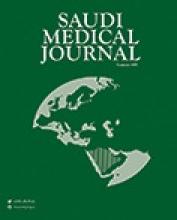Abstract
OBJECTIVE: To investigate the development of the liver in human fetuses aged between 9-40 weeks.
METHODS: We studied 121 human fetuses (62 males, 59 females) with no external anomalies aged between 9-40 postmenstrual weeks during 2003-2004 in Suleyman Demirel University, Isparta, Turkey. The fetuses were divided into four groups as 1st, 2nd and 3rd trimesters and full term fetuses. We measured fetal weight, length, width, thickness, and volume of the liver. We established localization of the liver and its relation with the neighboring structures, its ligaments, and size of itself and its lobes, shapes of the liver and the localization of the porta hepatis on the visceral surface of the liver.
RESULTS: We found significant correlations between the size, weight, volume of the liver, sizes of its lobe and gestational age (p<0.001). Group comparisons disclosed significant differences between groups in all parameters except between 3rd and 4th groups with respect to the heights of the liver and the caudate lobe (p<0.05). During the fetal period, the proportion of the distance between the porta hepatis and the right margin of the liver to the distance between the porta hepatis and the left margin of the liver did not change significantly (p>0.05). However, the proportion of the distance between the porta hepatis and the upper margin to the distance between the porta hepatis and the lower margin decreased significantly with gestational age (p<0.05). Type 3 liver (square) was the most commonly observed type of fetal liver (53%).
CONCLUSION: Our opinion is that the parameters obtained can be useful to diagnose pathologies of liver development and anomalies concerning several branches of medicine such as anatomy, pathologic anatomy (fetopathology), forensic medicine, medical imaging, obstetrics and pediatrics.
- Copyright: © Saudi Medical Journal
This is an open-access article distributed under the terms of the Creative Commons Attribution-Noncommercial-Share Alike 3.0 Unported, which permits unrestricted use, distribution, and reproduction in any medium, provided the original work is properly cited.






